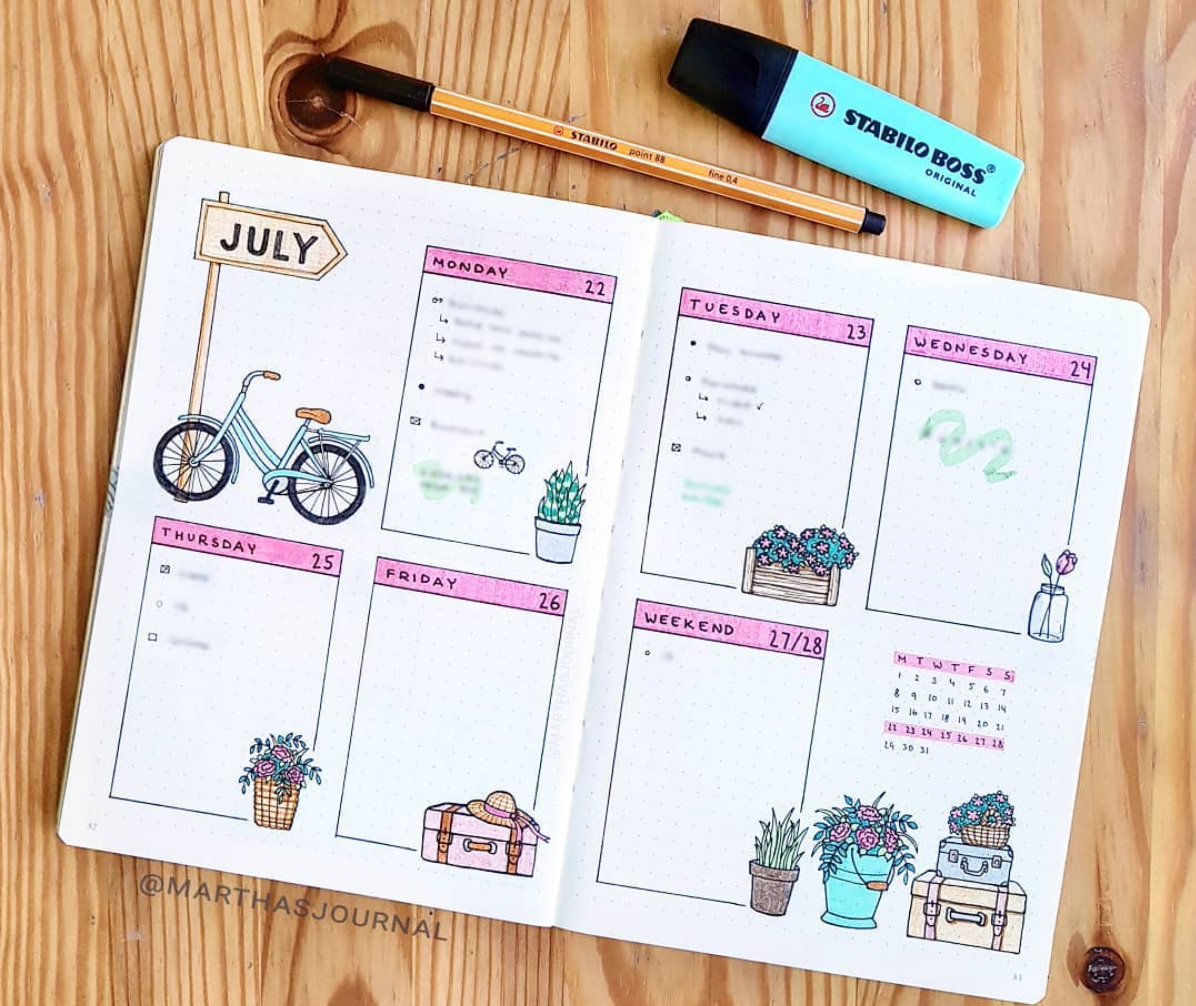A trendy solution to staying organized
How students can create a personalized and more productive planner by bullet journaling
High school is hectic, from homework and extracurriculars to jobs and— oh yeah— feeding the fish. Using a planner constantly reminds us of our busy schedules, but using one effectively can be difficult.
The bullet journal (BuJo) trend could be the solution to this struggle: it’s simply a customizable planner that focuses on increasing user productivity. This planner requires an empty journal that the user can design however they see fit. Students can include sections for recording club meetings, orchestra rehearsals and other events; make more room for weekend plans than the Blair planners provide and alter the BuJo method to fit personal preferences.
Ryder Carroll originally created the bullet journaling method in August 2013 to overcome his learning disabilities and stay productive. He describes his journaling as a "modular framework" where each module, called a Collection, groups related information together. Carroll emphasizes that the four core Collections— Index, Future Log, Monthly Log and Daily Log— are essential to a BuJo. Other Collections such as food and exercise logs can be made to suit the user's needs.
A table of contents listing the topics in each Collection is located at the front of the journal and makes finding notes easier. Bullet journals usually include both monthly and weekly spreads that give the user a basic summary of the month and space to write down homework assignments, extracurriculars, and other quick reminders. Users can also add a section that contains key tasks and events that will take place after the current month to give the user an outline of their future.
Another BuJo feature, "Monthly Migration," ensures that the user reassesses their priorities every month by identifying unfinished tasks and deciding whether or not to Migrate those Tasks to the next month. The point of Monthly Migration is to increase productivity by questioning whether tasks are worthy of spending time on and deciding which tasks take priority.
Concepción de León of The New York Times explains how Caroll's system of bullet journaling not only organizes tasks and events, but can be personalized to reflect personal interests. "Bullet journaling … organizes your to-do list, your schedule and your journal in one notebook while giving you free rein to design it according to your lifestyle," de León says.
Rising junior Talia Nesin began bullet journaling at the beginning of the summer, and uses it mainly for her summer health class, driver’s ed schedule and daily activities. “Being able to keep everything in one place makes it a lot harder to lose information about when my flights take off or what days I’m meeting people,” Nesin says.
In contrast to standard planners, using the BuJo system allows for customization to suit a particular individual’s needs. Blazers can make separate Collections for their schedules, special classes, jobs and even hobbies.
Stemming off the original BuJo system, many bullet journals now include diary entries, mood trackers or monthly playlists suited to the interests of the journal's owner. For example, an avid Netflix fan may include opinions and ratings on the shows and movies they watch, while a writer may jot down ideas or short stories.
Among these interests, artists such as @amandarachlee, @rozmakesplans and @marthasjournal on Instagram have most notably impacted and redefined the Carroll system. BuJo users began to branch off into their own styles and aesthetics, taking time to illustrate beautiful spreads for each week and topic. Some bullet journals stick to a certain aesthetic while others change the color palette and concept every week or month.
Key components of aesthetic bullet journalling include the evergrowing trend of calligraphy, pretty fonts, stickers, stamps, photos and patterned paper. Bullet journals with these attributes resemble scrapbooks while also working as planners.
Nesin adds that decorating her journal with pictures, travel tickets and stickers encourages her to use it more. “It’s really creative and fun! I like how visual it is… it’s also a lot more relaxing than just sticking stuff in a Google calendar or notes app, and I feel proud of the finished product,” she concludes.
Some users may decorate their bullet journal to be more engaging, while others may prefer spending less time on the journal and keeping it simple. The user ultimately controls the BuJo’s visual appearance and the amount of effort put into creating the pages.
If planning with standard to-do lists and agenda books hasn't been helpful for your personal study habits and schedule, making a bullet journal may be an effective and customizable solution.
For more information on Bullet Journaling, visit https://bulletjournal.com/pages/learn.
Tags: Lifestyle bullet journal bujo productivity
Yuri Kim. Hey, I'm Yuri and I'm a senior :) When I'm not on SCO, I'm listening to music, overusing emojis, and/or working on another strange arts-and-crafts project. More »
Comments
No comments.
Please ensure that all comments are mature and responsible; they will go through moderation.

